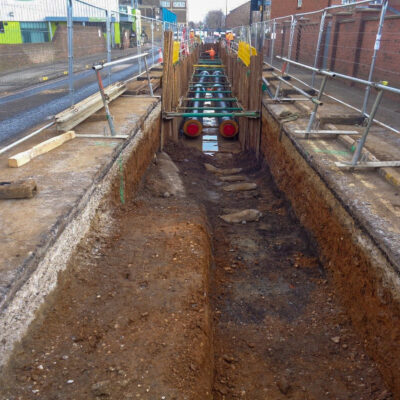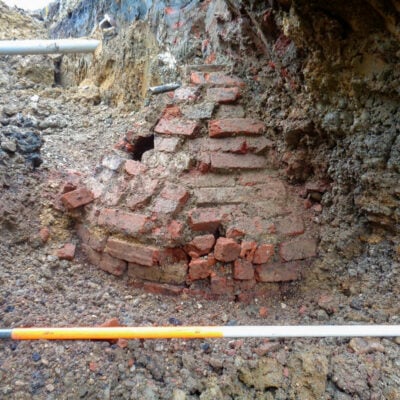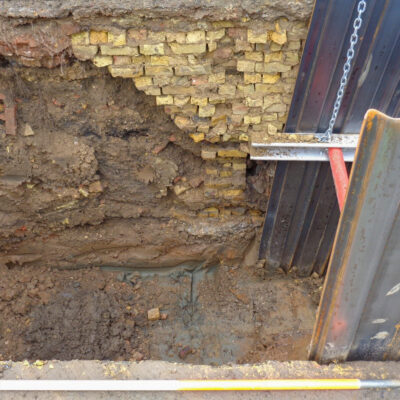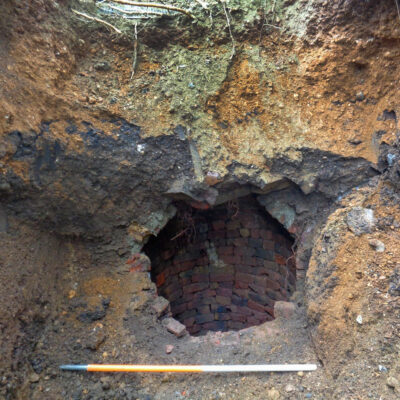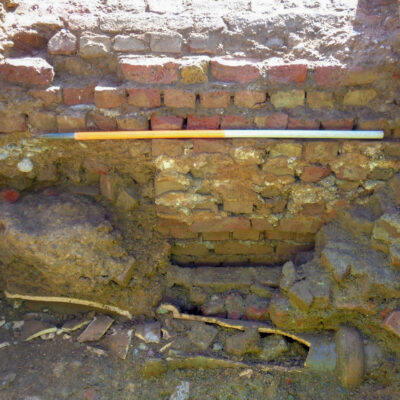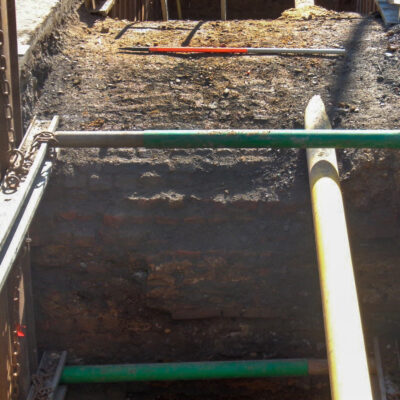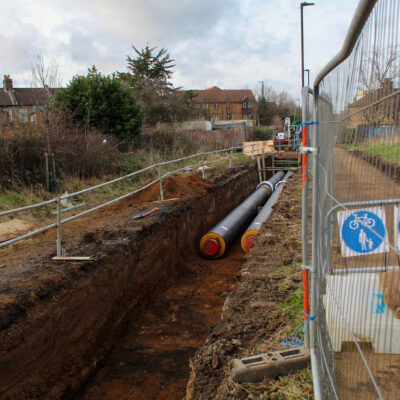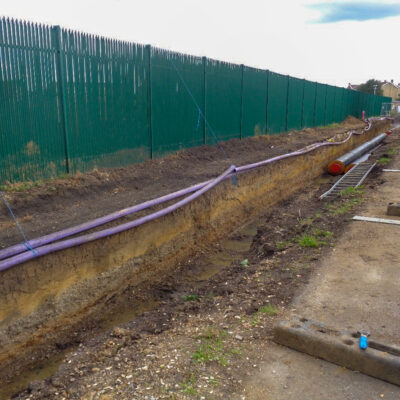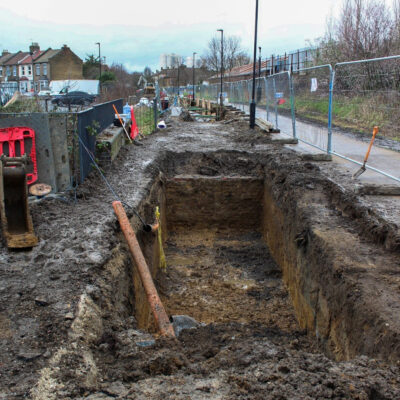Archaeological Programme of Works, London
We were instructed by Energetik to undertake a programme of archaeological observation during engineering groundworks relating to Phase 1 of the Enfield District Heating Scheme
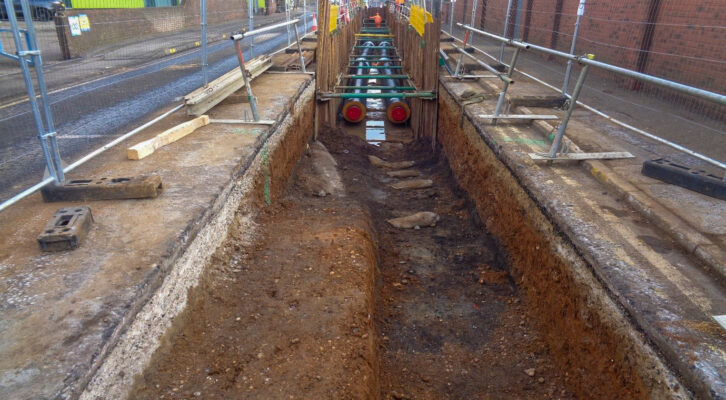
In Brief
Key Points
- Watching Brief carried out subsequent to our Desk-Based Assessment
- 2.5km of open-cut trenching for the pipeline
- Structural remains of post-medieval date identified
Summary
We initially undertook a Desk-Based Assessment of the proposed Phase 1 scheme which identified that it extended through two Archaeological Priority Areas, namely the Roman road of Ermine Street and its associated roadside settlement and a focus of Medieval settlement at Lower Edmonton. The scheme also extended within or immediately adjacent to four Conservation Areas namely The Crescent, Fore Street North, Fore Street Angel, and the Montagu Road Cemeteries.
Following our Desk-Based Assessment, we undertook a Watching Brief on groundworks associated with 2.5km of open-cut trenching. Most of the route was undertaken through the existing carriageways, therefore most of the watching brief works encountered made ground overlying the natural substratum, which varied between clays of the London Clay Formation and Enfield Silt Member and gravels of the Kempton Park Gravel Member.
Results
Two post-medieval brick-built water cisterns were recorded. Both cisterns were roughly constructed, and possibly built using earlier 18th Century reclaimed bricks. The construction of the cisterns would appear likely, on the cartographic evidence, to be of late-19th Century date. Historic mapping shows residential development did not commence within the areas in which these two brick structures were found until the late-19th Century.
Within the same area a brick wall was also encountered and likely associated with one of the late-19th Century large structures or residences depicted on a mid-20th Century map.
Brick culverts, also of post-medieval date, and still functioning, were also identified along the route.
Finds noted within the monitoring of the trenches included fragments of China pottery, CBM and Clay Tobacco Pipe (CTP) stems, of 19th-20th Century date, which were photographed but not retained.

